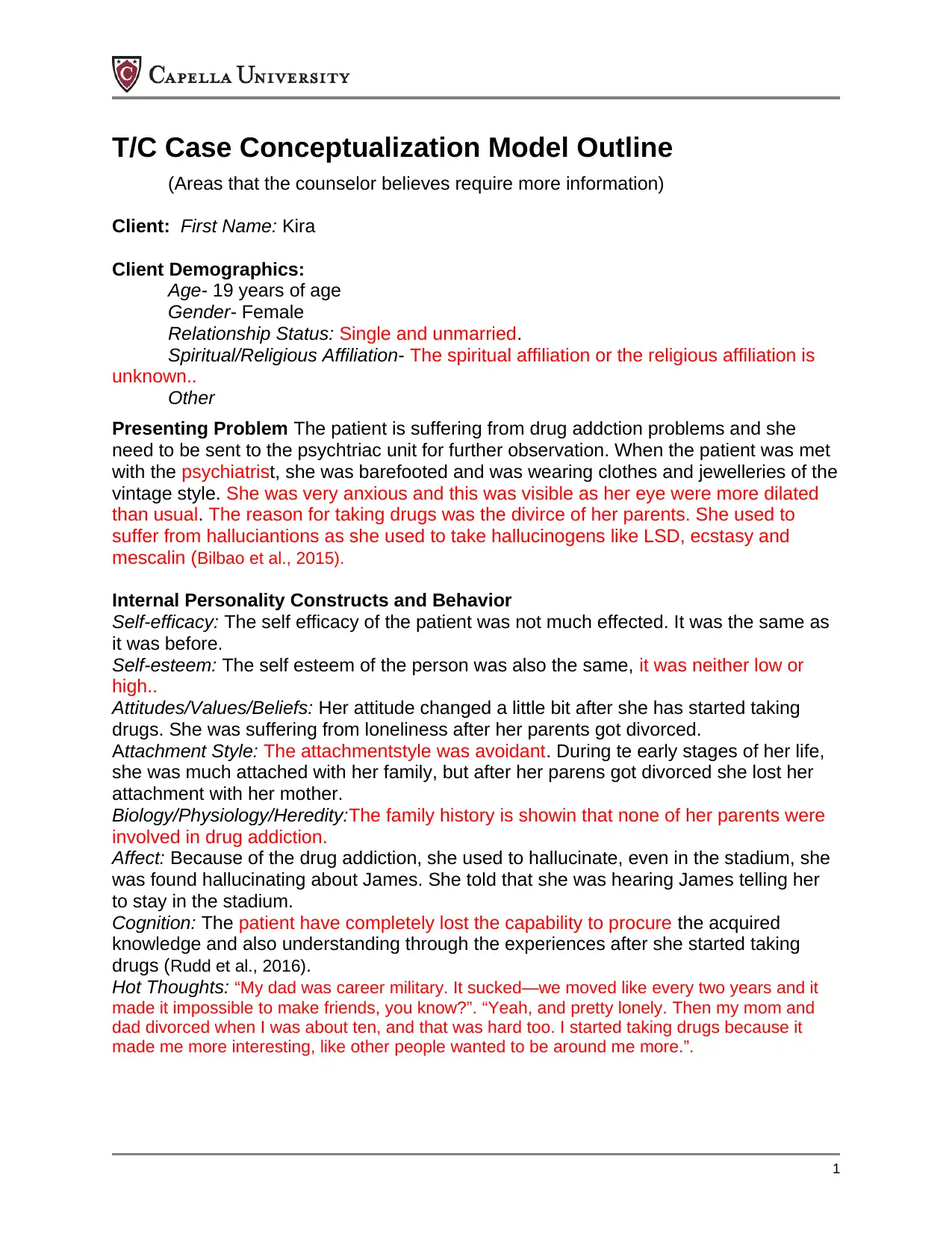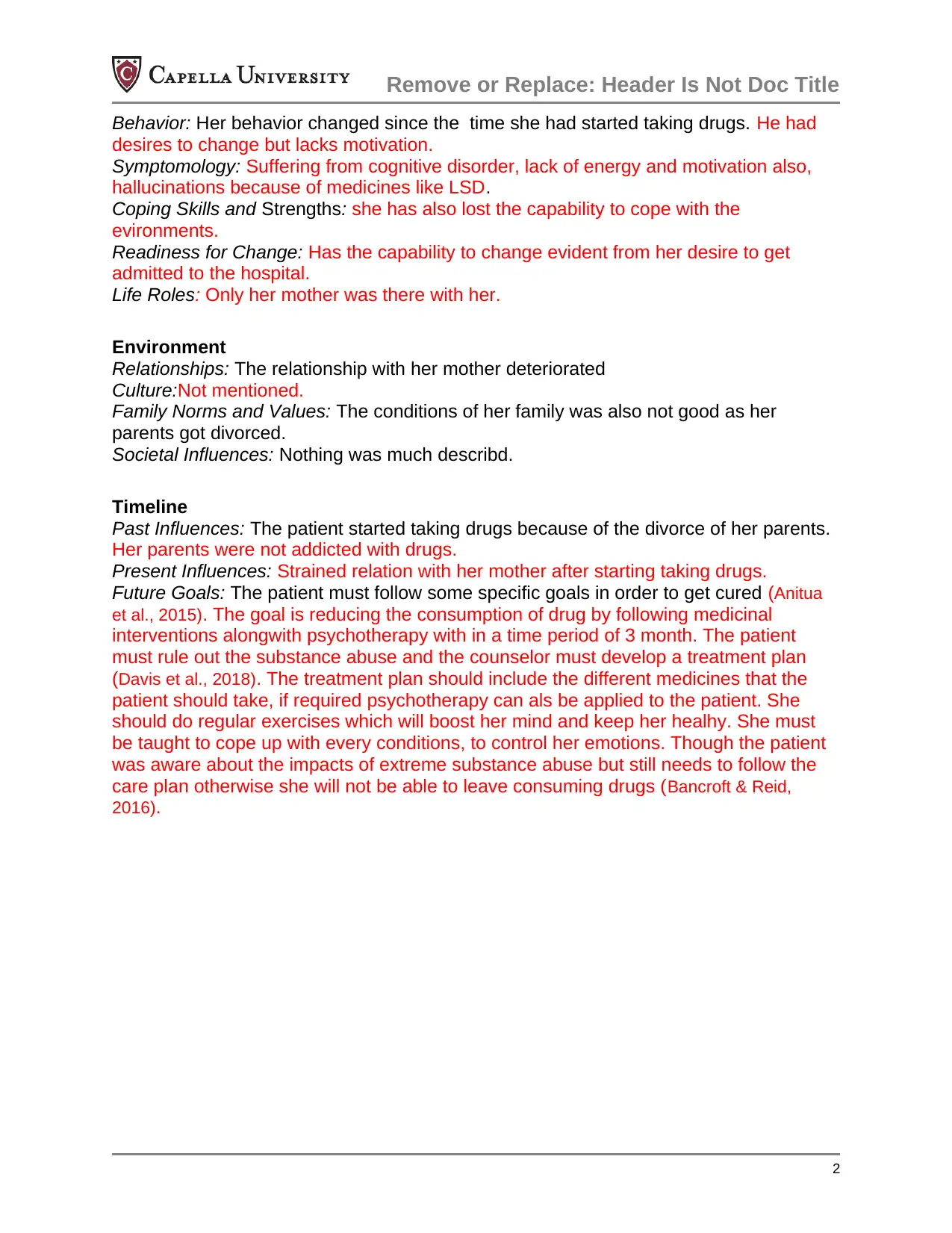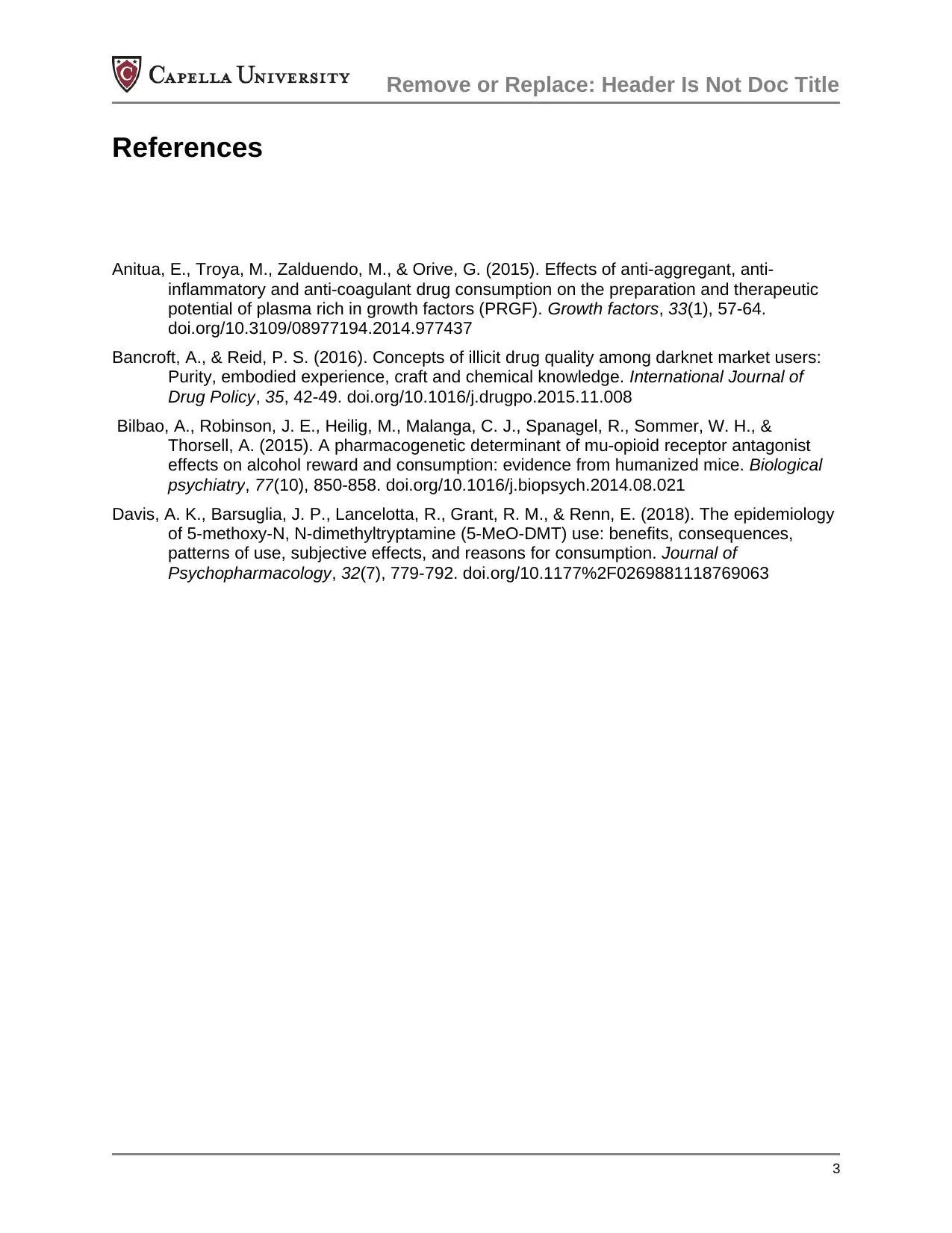T/C Case Conceptualization Model Outline: Kira's Drug Addiction
VerifiedAdded on 2022/10/18
|3
|1003
|20
Practical Assignment
AI Summary
This assignment provides a detailed case conceptualization of Kira, a 19-year-old university student admitted to a chemical dependency unit due to drug addiction. The analysis utilizes the T/C (Temporal/Contextual) model, examining various aspects of Kira's life, including her presenting problem, demographics, internal personality constructs (self-efficacy, self-esteem, attitudes), attachment style, biological factors, affect, cognition, and behavior. It explores her history of drug use, including the use of hallucinogens, and the impact of her parents' divorce. The document highlights her symptoms, coping skills, readiness for change, and life roles. Additionally, the assignment outlines Kira's timeline of influences, including past and present factors, and proposes future goals for her recovery, such as reducing drug consumption through medicinal interventions and psychotherapy within a 3-month period, along with regular exercise and emotional regulation techniques. References to relevant research papers are also included.
1 out of 3









![[object Object]](/_next/static/media/star-bottom.7253800d.svg)